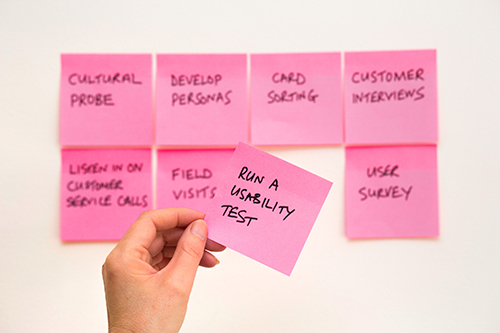user-research
Real user research validates assumptions with real users, this ensures you and your team are tackling the right problem with the right solution
A product design team can employ research methods such as observational and experimental methods. These methodologies help teams form a complete understanding of the true user’s needs and context of use.
The type of user research method used depends on the product to be developed, the timeline and budget. UX research can be done at any stage of the project, but the earlier the research is done, the more impact the findings will have on the product.
Photo by David Travis on Unsplash
The research can be carried out by using mixed methods and activities that can go under two types: quantitative and qualitative methodologies. And the differences between these types of research methods are the numerical and narrative sets.
The qualitative method is primarily exploratory research used to gather opinions, motivations and underlying reasons. This can include:
- User Personas
- Scenarios
- Focus groups
- Prototyping
- Ethnographic studies
The quantitative method is used to quantify the problem, opinions, behaviour and defined variables. This type of research uses measurable data. This type of research does not tell us how to fix the problem or why things happen, while very informative it does not tell the context of use. Quantitative Data collection can be carried out with:
- Surveys
- Eye tracking (It helps with UI design and it helps with knowing how to prioritize certain kinds of content)
- A/B testing
- Card sorting
- Analytics
- Customer feedback
Data gathered from any of the methods or mixed methods will provide relevant insights about the user and the experience the user has with the product or service. By validating assumptions with real user research and user testing, you and your team will be sure you are tackling the right problem with the right solution. It will keep everyone’s efforts on the right track based on true user’s needs and help avoid biases.
Based on these finds and insights it is then possible to create a real Persona, used in the exploration stage. This persona will be the main character used to create the journey map. And it will emphasize the goals, needs, opinions, expectations, frustrations or pain points the user goes through.
User research and user-centred design approaches enable teams to validate assumptions and hypotheses. By validating those assumptions, the team can reduce any risk at an early stage in a product-development lifecycle, before making a significant investment in a design solution and development. It also reveals key insights to provide a good experience for the users.

